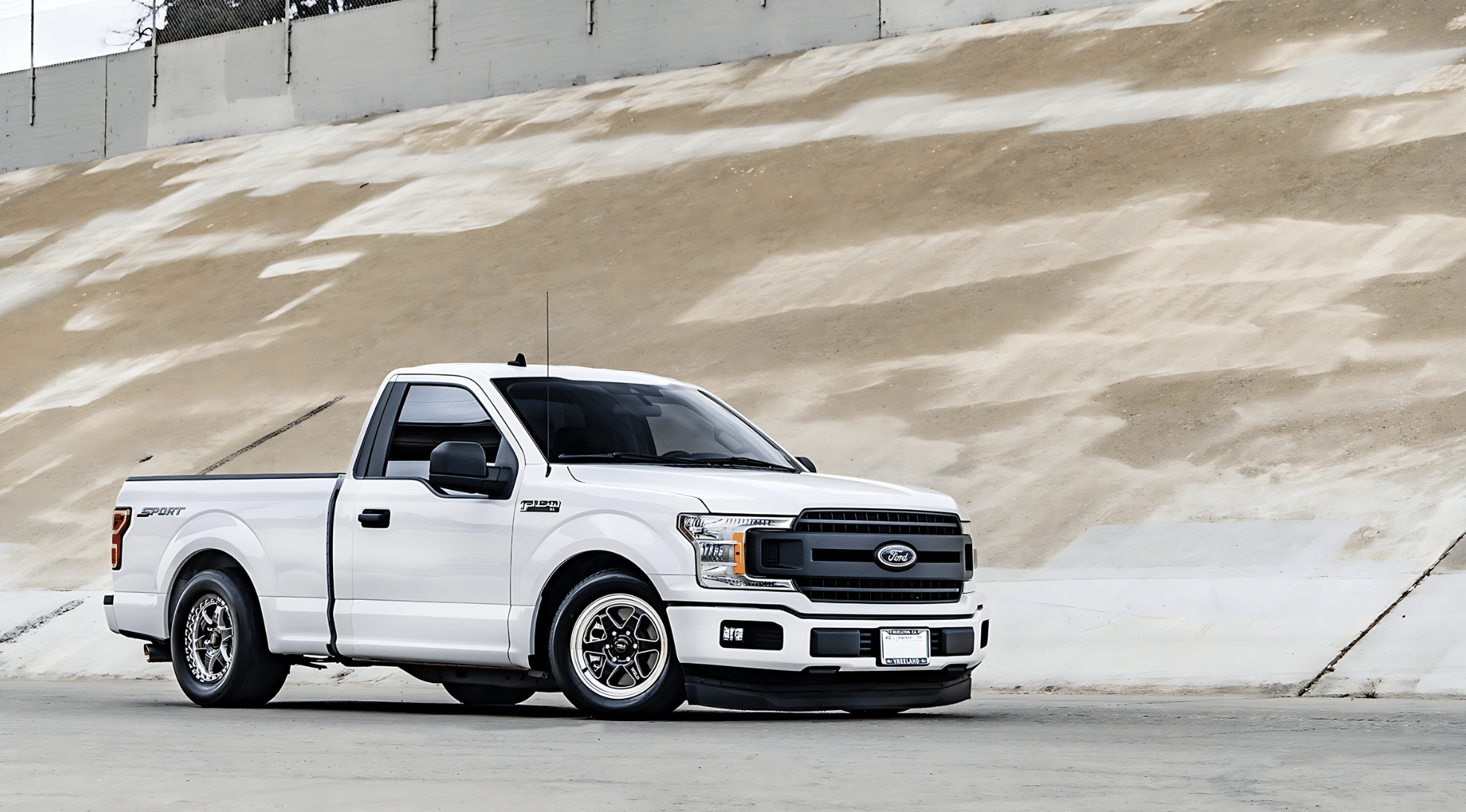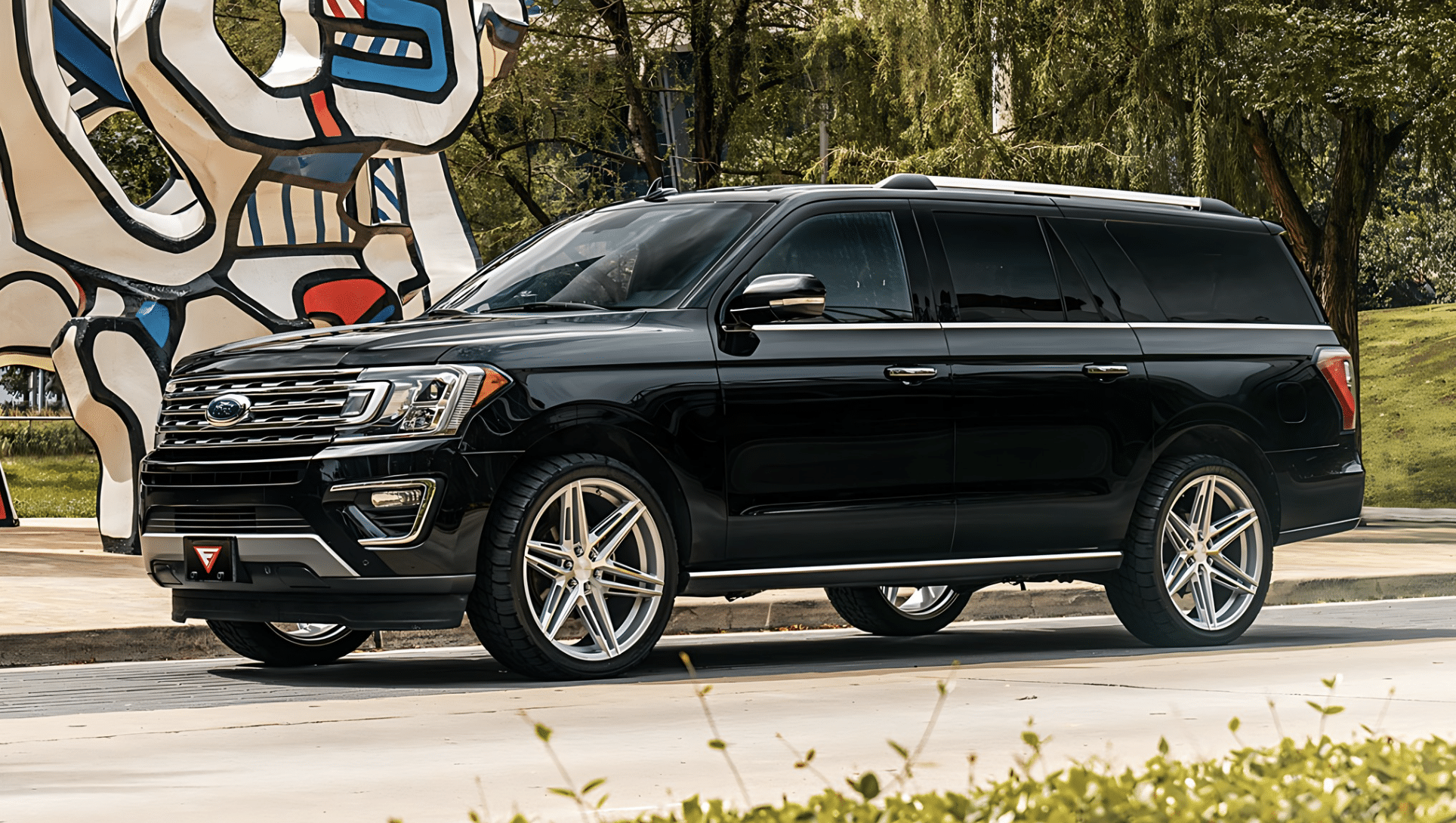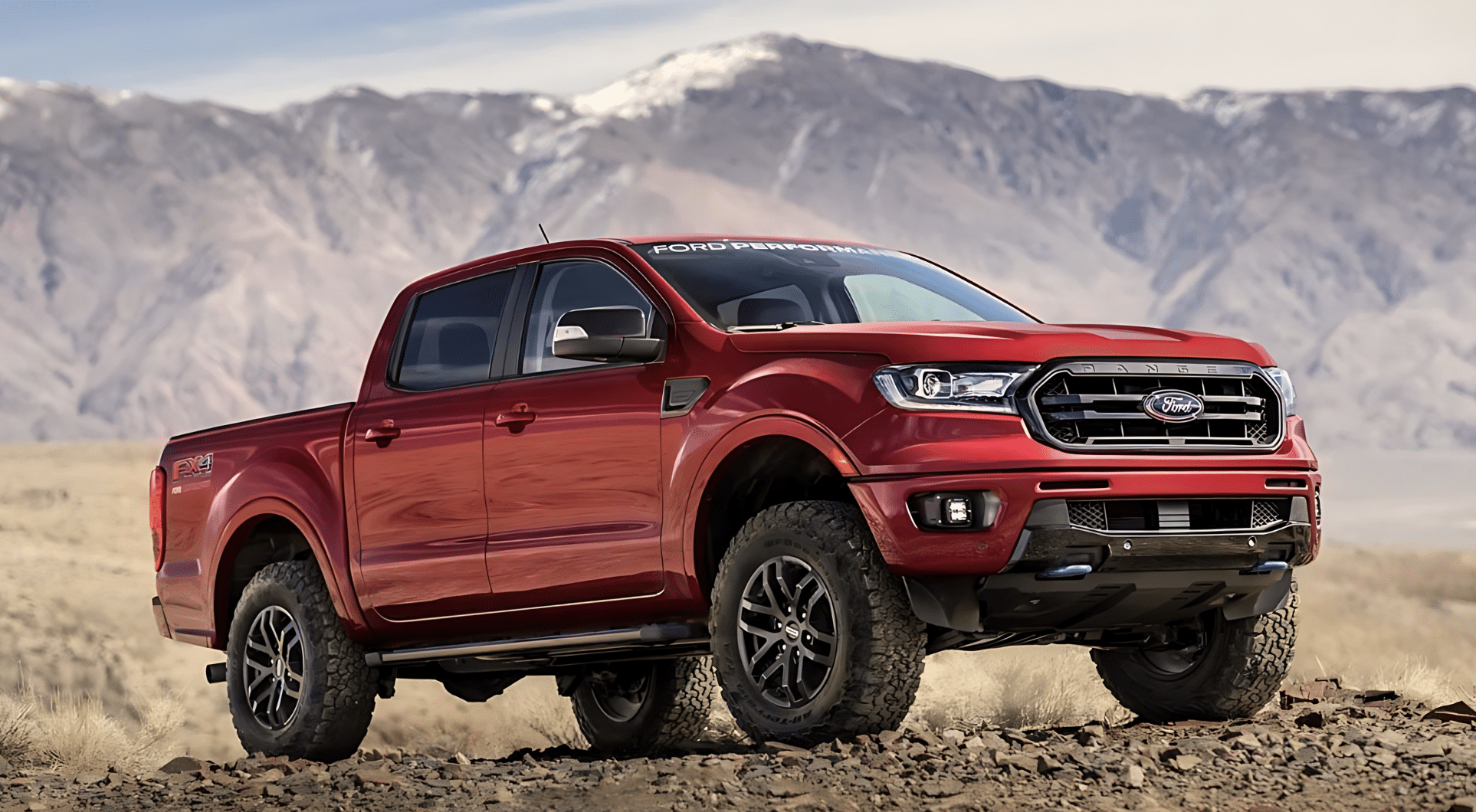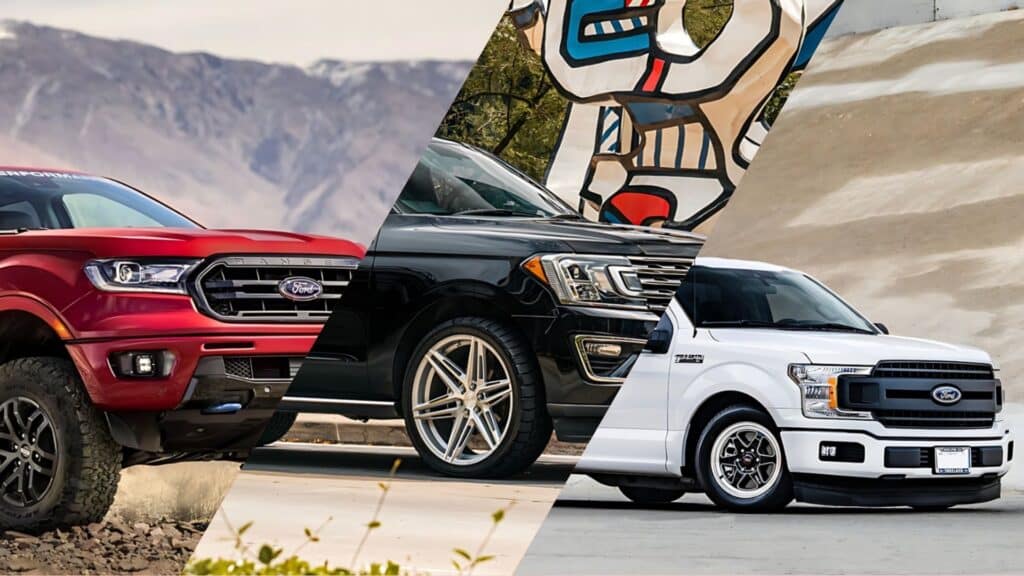The small studs on a Ford truck’s wheels might not catch the eye at first glance, but they’re crucial to the vehicle’s performance.
These studs form the 6-lug bolt pattern, a key feature in many Ford trucks and SUVs. This pattern has been integral to Ford’s engineering for decades, evolving and improving yearly.
The 6-lug bolt pattern has played a significant role in improving the strength and reliability of Ford vehicles.
In this blog, I will study the evolution of Ford’s 6-lug bolt pattern through the years, examining its importance, the improvements it has undergone, and the various models that have utilized this design.
From its early beginnings to its modern applications, the story of Ford’s 6-lug bolt pattern is one of continuous innovation and adaptation.
What Does the 6 Lug Bolt Pattern Mean?
The 6-lug bolt pattern refers to a setup of six studs on a wheel hub where the wheel attaches, and it plays a crucial role in vehicle performance.
This pattern evenly distributes weight and stress across the wheel,improving its ability to handle heavier loads and demanding conditions.
Ford introduced the 6-lug bolt pattern in the mid-1900s for its trucks and SUVs, offering a balance between strength and weight.
The 6-lug pattern is stronger than the 5-lug used on cars but lighter than the 8-lug on large trucks.
Ford has adapted the 6-lug bolt pattern over time by changing lug size, spacing, and materials to improve performance.
These changes have improved Ford’s trucks and SUVs, making them better at handling heavy loads, off-roading, and providing a smooth ride.
The 6-lug Ford bolt pattern continues to provide durability and stability, making it an ideal choice for a range of driving conditions, from heavy-duty tasks to everyday commutes.
It ensures that Ford vehicles maintain strength without unnecessary weight, offering excellent handling and performance.
Origins and Rising Popularity
Ford introduced the 6-lug bolt pattern in the 1950s and 1960s as trucks evolved from purely industrial workhorses to vehicles used for both work and leisure.
As trucks gained popularity for a broader range of uses, the 6-lug pattern emerged as the perfect solution, offering a balance of strength for heavy-duty tasks and practicality for everyday driving.
The 6-lug Ford bolt pattern became essential for the Ford F-Series, one of the first major models to benefit from this design.
It allowed the F-Series to handle a wide variety of tasks, from carrying heavy loads on rugged terrain to towing trailers on highways.
The versatility of this pattern made the F-Series popular among users who needed a truck for diverse purposes, proving effective in environments ranging from construction sites to city streets.
Evolution Through the Decades
Ford’s 6-lug bolt pattern has changed a lot over the years. Let’s look at how it grew and improved in different decades. We’ll see how it helped make Ford’s trucks and SUVs more useful and popular.
1. 1970s-1980s: Standardization and Expansion

Ford F-150
In 1975, Ford introduced the F-150, which instantly became a driver’s favorite. The 6-lug bolt pattern played a big part in its success.
It made the F-150 strong enough to handle heavy loads and tough terrain. The 6-lug pattern helped make the F-150 a truck that could do it all.
Ford Bronco
The Ford Bronco also used the 6-lug pattern during this time. The Bronco was known for being great off-road, and the 6-lug pattern helped with this.
It made the wheels strong enough to handle bumpy trails and rocks. But it also worked well on normal roads.
2. 1990s: Technological Advancements

Ford Explorer
In the early 1990s, Ford started making the Explorer. Some versions of this SUV used the 6-lug pattern, mostly for models meant for off-road use or those that could carry more weight.
The 6-lug pattern helped make the Explorer good for family trips and outdoor experiences.
Ford Expedition
Ford introduced the Expedition in 1997. As a big SUV, it needed strong wheels, and the 6-lug pattern was perfect for this.
It helped the Expedition carry heavy loads and many people, making it a good choice for big families or people who needed to tow things often.
3. 2000s-Present: Continued Refinement

Modern Models
Today, Ford still uses the 6-lug pattern in many trucks and SUVs. The F-150 keeps using it, showing how well it works.
This pattern is also used by the Ranger, which returned to the U.S. in 2019. It makes the Ranger suitable for both city driving and off-road trips.
The new Bronco, which came back in 2021, also uses the 6-lug pattern. This helps it tackle tough off-road trails while still being good for everyday use.
Ford keeps making the pattern better, using new materials and designs to make it stronger and safer.
Why Ford Chose the 6 Lug Bolt Pattern
Performance and Safety
In today’s Ford trucks and SUVs, the 6-lug bolt pattern keeps doing well. It helps make these vehicles safe and good at what they do.
The pattern spreads out the vehicle’s weight better. This means the wheels can handle more stress without breaking, which is important when driving a heavy truck or SUV.
It also helps keep the vehicle stable. Whether driving on a smooth highway or a bumpy dirt road, the 6-lug pattern helps keep the wheels firmly attached.
Ford has improved the pattern over time. They now use stronger materials, which means the wheels can handle even more stress.
The 6-lug pattern also helps with braking. Because the wheel is attached so well, the brakes can work better, allowing you to stop more quickly and safely when necessary.
Versatility and Reliability
The 6-lug bolt pattern is a big reason Ford’s trucks and SUVs can do many different things.
It makes the vehicles good for both work and play. During the week, you could use your Ford truck to haul heavy stuff for your job. Then, on the weekend, you could take it off-road for fun.
The pattern also helps make the vehicles more reliable. Because it’s so strong, there’s less chance of wheel problems.
It also works well in all sorts of weather. Whether hot and dry or cold and wet, the 6-lug pattern helps keep the wheels secure, which is great for people living in places with changing weather.
The pattern even helps with fuel efficiency. Because it’s strong but not too heavy, it doesn’t add unnecessary weight to the vehicle.
This means that when you buy a Ford truck or SUV with a 6-lug bolt pattern, you get a vehicle that can handle all sorts of jobs and experience.
Lug Bolt Patterns: 5, 6, and 8 Compared
This table briefly overviews how the 5, 6, and 8-lug bolt patterns compare regarding usage, strengths, and limitations.
It highlights the unique balance that the 6-lug pattern offers, making it a preferred choice for Ford trucks and SUVs.
| Basis | 5 Lug Pattern | 6 Lug Pattern | 8 Lug Pattern |
|---|---|---|---|
| Usage | Passenger cars and light vehicles | Ford trucks and SUVs | Heavy-duty trucks |
| Strengths | – Lighter weight, improving fuel efficiency | – Good balance of strength and weight | – Maximum strength for heaviest loads |
| – Adequate for everyday driving needs | – Versatile for various driving conditions | – Best for frequent towing of large trailers | |
| – Suitable for moderate towing and off-road use | |||
| Limitations | – Less sturdy for heavy loads or tough terrain | – Not as light as five lugs for smaller vehicles | – Heavier, affecting fuel efficiency |
| – Not ideal for larger trucks or SUVs | – More complex, potentially increasing maintenance needs | ||
| Conclusion | Best for lighter, everyday vehicles | Ideal for a mix of power, efficiency, and versatility | Optimal for the most demanding tasks, but with added weight |
Wrapping It Up!
Ford’s 6-lug bolt pattern has advanced greatly since its introduction in the mid-20th century. It’s more than just a technical detail—it’s a key part of what makes Ford trucks and SUVs capable and versatile.
From the classic F-150 to the modern Bronco, this simple design has helped Ford vehicles tackle tough jobs, go on exciting experiences, and easily handle everyday driving.
The 6-lug pattern perfectly balances strength and practicality, setting it apart from lighter car wheels and heavier truck designs.
Ford continues to improve this feature, making it even better for today’s drivers.
So next time you see a Ford truck or SUV, take a moment to appreciate those six little studs—they’re doing a big job keeping you safe and your vehicle performing at its best.
Frequently Asked Questions (FAQs)
Why Is the 6-Lug Bolt Pattern so Crucial for Ford Trucks?
It’s the secret behind their unmatched strength, stability, and performance on tough terrains.
Why Do Off-Road Enthusiasts Swear by Ford’s 6 Lug Pattern?
It’s rugged, reliable, and built to conquer the toughest terrains without breaking a sweat.
Is Upgrading to A 6-Lug Pattern Worth It for My SUV?
Yes, if you need enhanced durability for heavy-duty tasks and off-road challenges.


